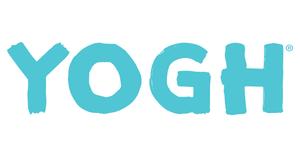Nine tried-and-tested hair care tips I've gathered over the years from personal experience and from considerable reading on scalp and hair health and chemistry. Applying them has made a positive difference in the health of my hair and scalp, so I thought I'd share them.
These tips are suitable for ALL hair types: straight, wavy, brittle, curly, frizzy, feathery, fine, dry, oily, thinning, heavy, dandruffy, sensitive, color-treated, straightened, curly, cold-curly, impossible, and any other hair type (heads).
Maybe you already know some of these, maybe not.
TIP 1 - Don't scrub, but ABSORB!
After washing (or wetting) your hair, never scrub it vigorously with a towel to remove moisture. Instead, gently blot the hair. Even better: wrap the wet hair in a towel - and let it soak up the moisture while you do something else for a few minutes (like wiping the bath, slathering on some cream, doing facial gymnastics, or singing a 3-minute aria for your ears alone).
Here's why:
Vigorous rubbing both stresses and thins the hair, which in turn stimulates split ends and frizzy, split ends-much more than you can imagine.
TIP 2 - Only a wide-toothed comb for wet hair - regardless of hair type
Combing wet hair requires special care. Use a comb with sparse, wide teeth (even if you have thin, straight locks) and always be extremely, damn gentle.
If your hair is tangled, knotted, super long or super curly, be sure to "brace" it in the part closer to your scalp with your other hand while gently combing your wet strands.
Here's why:
Wet hair is more susceptible to excessive stretching and frizz. It should therefore be treated with real tenderness and love.
TIP 3 - Air dry instead of blow dry!
There was a time - before hair dryers existed - when no one on earth suffered from what we know today as "hair like a haystack". Back then, everyone let their hair dry naturally - in the air.
Air drying your hair is the healthiest because it dries less. Before you gasp in horror at the mere thought of abandoning your blow dryer forever, do your locks a favor and give it a try - at least once.
If you still have reservations, try this:
- Don't reach for the blow dryer until your hair is about 75% dry.
- Set the temperature to cool.
Oh, your hair is healthier and no longer looks like a haystack? Excellent!
TIP 4 - Proactive Oil Treatment
I'm sure you already know that an oil mask helps with dry, itchy scalp, but did you know that applying a little oil is great for the overall health of your hair and scalp?
Here's a quick and easy way to incorporate this simple procedure into your routine.
Before taking a shower, apply a small amount of olive, coconut or almond oil to dry hair, rub it through the hair with your fingers and gently massage the scalp for a minute or two. Then wash it off.
How much is a 'small amount'?
- For short to medium length hair: about half a teaspoon
- For heavy, long hair: approximately 1-2 teaspoons
You'll know you've applied the right amount when the oil soaks in without your hair looking greasy.
With regular practice, this simple procedure will give your hair a healthy shine and keep your scalp in great condition. The best part: you can apply it as often as you wish.
TIP 5 - Natural conditioner
Jojoba oil, coconut oil or hemp seed oil are wonderful hair conditioner options that can be applied directly to dry or wet hair.
The trick is: less amount is better. You know your own hair best, so you'll need to feel the right amount for you. Distribute it by rubbing a few drops at a time between your palms and "combing" through your hair with your fingers.
A very light layer nourishes and adds shine without signs of greasiness.
If your hair has dry ends, start with the ends (while your hands are most heavily oiled).
TIP 6 - Fighting hair loss
Do you have a minute? That's all you need to complete the sixth hair care tip.
Baldness starts at the top.
Have you noticed that baldness never starts at the nape of the neck, but always at the top of the head? The reason is lack of stimulation.
To demonstrate, try this little test:
Turn your head to the left. Look up.
Turn your head to the right. Look down.
There: you've just stimulated the base of your scalp without even thinking every time you move your head.
And the top of your head?... We humans, have no natural grimaces, facial expressions or movements (no hands) that stimulate the top of the scalp.
Stimulating the scalp is the key to increasing blood flow and circulation. It is circulation that is the key to health, and health is the key to growth. Therefore, to stimulate hair growth, full follicles and everything else that is good for the head and hair, massage your scalp using the method described below. Once a day is fine - twice is better, and if you're really serious, do this several times a day.
Here's how to do a stimulating scalp massage.
The point is not so much to move your fingers over your scalp, but to move your scalp under your fingers.
Position your fingertips on the scalp and gently massage the area in a circular motion. Move your fingers and continue to another part of the scalp. After about 60 seconds, you are done.
You don't have to tousle your hair and you don't have to use force. The secret is gentle but firm pressure.
If your hair is thinning, try this little massage a few times a day to notice a difference in just 2 months.
TIP 7 - No to the salt spray!
Don't mention salt spray and hair health in the same sentence.
No matter how pretty the packaging, world-famous the brand or high the price, salt spray is not now nor has it ever been nor will it ever be good for your hair or scalp.
Salt dries both hair and scalp and contains no nourishing components - it really does more harm than good. So for healthy, bouncy locks - opt out of the salt spray.
TIP 8 - Wash your hair regularly, but not often
Sebum and impurities build up on the surface of the scalp and block hair follicles, slowing their growth. Keeping the scalp clean helps to reduce these build-ups. However, washing your hair too often can also remove the good oils that hair follicles need to build healthy, strong hair. You'll need to experiment for a while until you establish the best washing rhythm for your hair. Once a week is probably optimal, and twice for oily hair.
TIP 9 - Use natural hair washing products
Shampoos, conditioners, oils, masks, gels, sprays, dyes, etc. can block hair follicles and provoke irritation over time. Always choose natural hair products. Natural ingredients and active components such as essential oils and herbal extracts refresh, cleanse and soothe the scalp without the harmful effects of synthetic chemicals.
For example, all YOGHHAIR® shampoos contain essential oils and herbal extracts in active cosmetic concentrations with documented properties for the hair and scalp.





